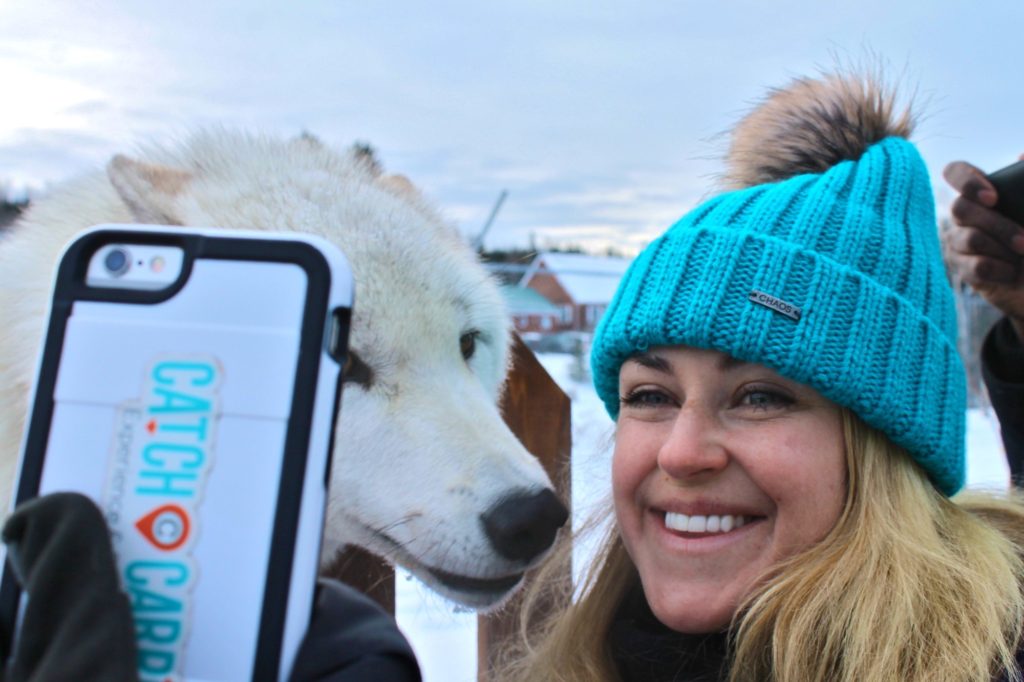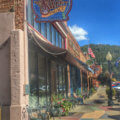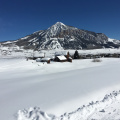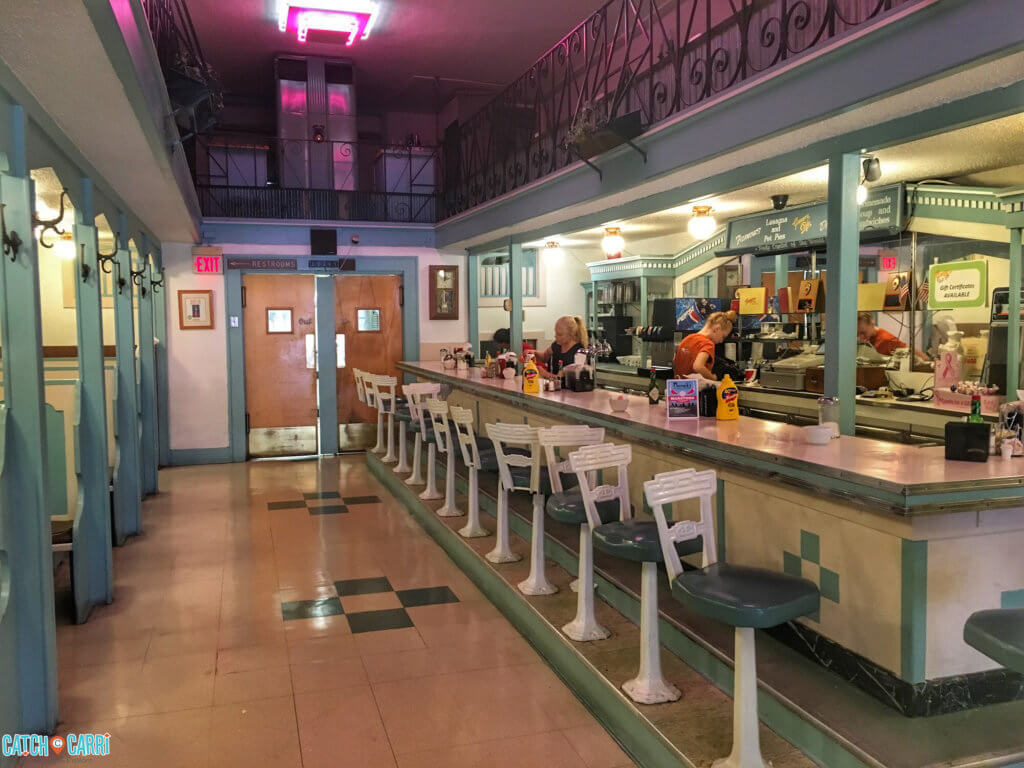
Living History in Butte: My Favorite Forgotten Montana Boom-Gone-Bust Town
Evel Knieval’s childhood playground, Butte, Montana is rough and tumble Wild West frontier city through and through. Located in the Silver Bow Creek, the city was put on the map as a mining boomtown in the late 19th century and lays claim to be the “Richest Hill On Earth” thanks to the profitable minerals extracted underground. During its heyday, Butte grew into a thriving city and is now home to the second largest national historic district after New Orleans. A walk through downtown is historically impressive with row upon row of seemingly untouched brick buildings that once housed everything from salons to brothels, banks to other businesses.
Today, the buildings still stand with the original colorful painted ads on the sides, but now house everything from restaurants to bars. Butte is also home to a lot of relics from its mining prime. Right on the outskirts of the downtown, for instance, you will find several headframes that stand over mind shafts. When the price of copper dropped after WWI, so did the town’s population. Mining might have eventually gone bust, but what remained is a kind of rugged individualism that you have to visit in order to understand. Butte is the kind of place where you will find locals who are as welcoming as they are prideful; the kind of city where many of residents excite to share their collective history and traditions. And more that anything, Butte is a town with a good story to tell.
Here are some top spots in Butte you don’t want to miss:
1. Head Underground For A Walking Tour
When it comes to boomtown mining history, every Wild West town has a good story, but Butte’s is particularly fascinating, and it is one you will only learn upon venturing underground.
The star of the Underground Walking Tour, offered by Old Butte Historical Tours, is the Roaring 20’s Rookwood Speakeasy in the basement of the former Rockwood Hotel. Before entering the speakeasy, you can see where woman would hang their fur coats before relaying a password through a small peephole in the door to get in. Once inside, a musty smell adrift and I start to imagine the room in its heyday in the 20’s with jazz, flappers and gambling. A terrazzo tile floor, stained glass skylights and an elaborately carved bar showcase the style in the design.
It’s unconfirmed when the speakeasy shut down, but there was a 1929 $2 bill found meaning it could have been open until then. Back above ground, our guide pointed out stairways (now blocked off) that once led to underground walkways beneath the sidewalks to make smuggling alcohol and other goods easier.
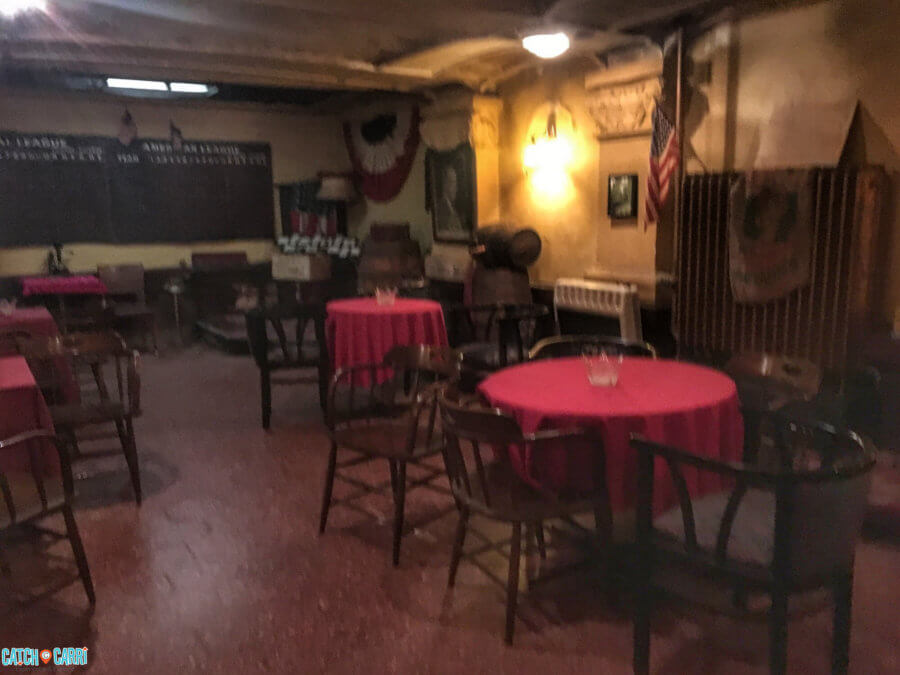
We also saw inside the former City Jail, which opened in 1890 and operated until the 70s in the basement of the former City Hall Building. The feds had a close eye on the police chief and other officers for corruption and mistreatment and eventually shut down what they dubbed the Butte Bastille after an inmate suicide.
Inside you can see different cellblocks to house women, drunks and the real bad guys. Regardless of where they were locked up there were more inside than there were beds. In 1956, Robert (Evel) Knievel, who grew up in Butte, was arrested for reckless driving and brought here. Today, you can see graffiti on the walls, original beds and other memorabilia found after it was cleaned out.
Travel Tip: If you have more time it’s worth taking another tour- like the Dellinger- where you will see inside a remodeled building that left the upstairs inaccessible and abandoned since 1938. In 2010 a group of volunteers rebuilt a staircase and spent several years cleaning out the upstairs. Today, you can see offices with original furnishings and paperwork left behind of former attorney, an adjustment company and employment office. You will also head over an overpass in the building to a former brothel.
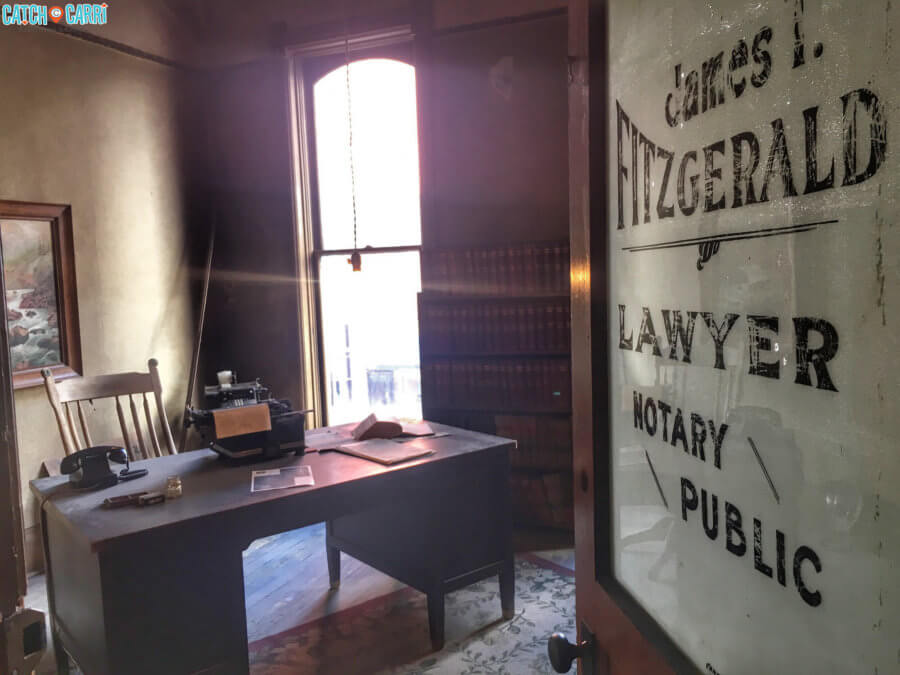
2. Head Underground (Again) for A Mining Tour
With such an extensive mining history, a trip to Butte should also include a trip to the World Museum of Mining, which is built on actual mine yard: The Orphan Girl. The mine produced copper, zinc gold and silver and operated from 1875 to 1956, which shows just how many treasures could be extracted here. Before heading on an Underground Walking Tour, our guide walked us around above ground to show us a recreated mining town, called Hellroarin’ Gulch, complete with everything from a bank, city hall, saloon, post office and even a sauerkraut factory. We also see the mine’s restored 100 foot long headrame and the double drum hoist (which lowered miners into the mine shaft) in the engine room to learn about the mechanics behind them.
Then, it was time to get geared up in hard hats with headlamps to go down 65 feet of the 27,00 foot deep Orphan Girl Mine. Underground, we learned about the mine carts that were once pulled by mules until electricity moved in. We also saw how ore was extracted and the changing methods as technology grew. Before drills were introduced, men worked in pairs with one holding a spike and the other a hammer to drive the spike into rock by rotating ever so slightly with each hit to create a hole that would be filled with dynamite.
The tour also lets you peep into a shaft station, used to bring miners up and down to the veins below the city of Butte. Towards the end of the tour, we were all told to turn our headlamps off to see what total darkness looks like, and then with just a small flicker, what it was like with the faint glow of candles workers depended on in the beginning mining era.
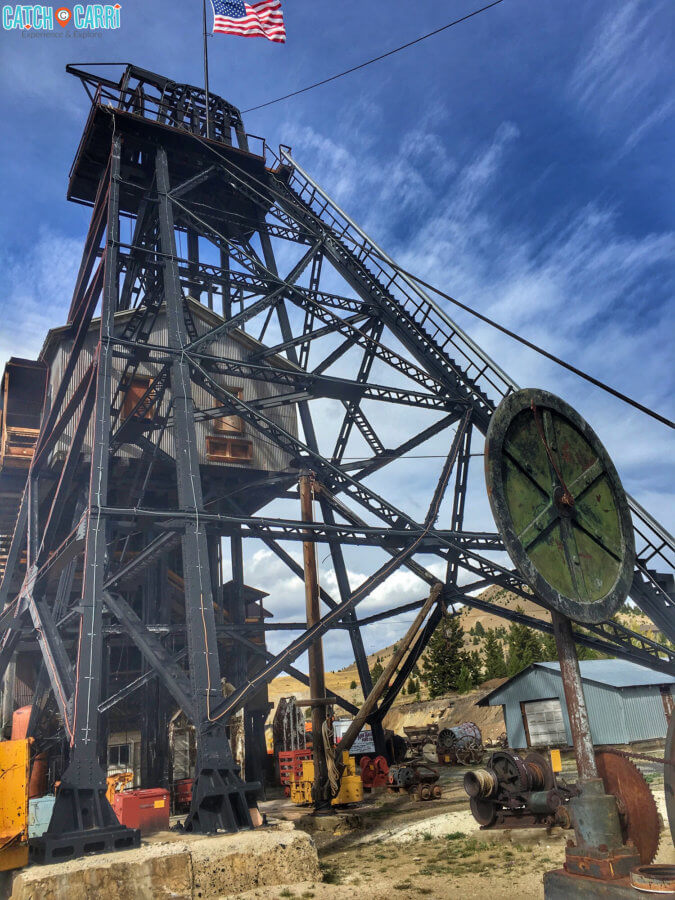
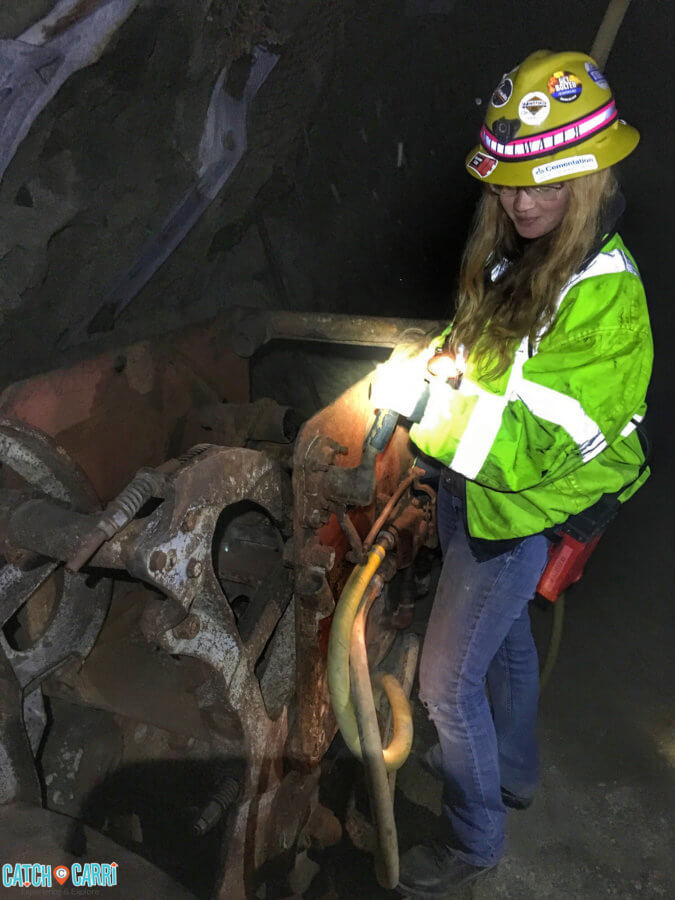
3. Drink Local Whiskey
It should come as no surprise that a town with a rugged individualism mentality like Butte’s also has its own distillery making spirits with names tied to Butte’s mining past. At Headframe Sprits, owned by Butte raised John McKee and his wife Courtney, you will find everything from gin and whiskey to vodka and bourbon. Head to the old fashioned bar tasting room to sample the liquor and the cocktails they create from it. The top seller is the Orphan Girl Bourbon Cream Liqueur, which is named for the mine. It’s similar to Bailey’s in taste and is mixed with Root Beer to create my favorite, the Dirty Orphan Girl cocktail. Another top pick is the classic old fashioned, made with the distilleries Never Sweat whiskey. Make sure to pick from the extensive cocktail list wisely, customers are limited to two drinks only as per Montana state law!
Next door to the tasting room is the distillery, which is set in a former Buick dealership. Today, instead of cars on the white and black tiled floor sits a copper still that operates with a continuous flow system developed by McKee. Geared with an engineering background, McKee decided to come up with a concept that would allow him to continuously distill without stopping production. He’s replaced ports with columns that allow for 1,000 gallons of fermented wash a day. It’s been so successful that it’s caught the interest of other distillers that McKee now sells the system to.
4. Eat Traditional Mining Food
During the mining boom, immigrants came from all over the world to work here. As a result, you had people from England, Ireland and Wales working alongside folks from Austria, Serbia, Mexico and China. As a result, they brought with them they brought all kinds of recipes and one that is still a locals go-to is the English pasties. The traditional Cornish and Welsh way to serve it is by wrapping steak and potatoes in a dough that is cooked until crisp like a chicken potpie. Order it smothered in gravy or have it served on the side. For the heartiest of appetites, have it smothered in chili and topped with cheese and onion. Order up at Gamer’s Café, a 50’s style diner that has been open since 1904. You can grab a seat in a wooden frame booth painted baby blue and white, or sit at the diner counter in a soda fountain style chair.
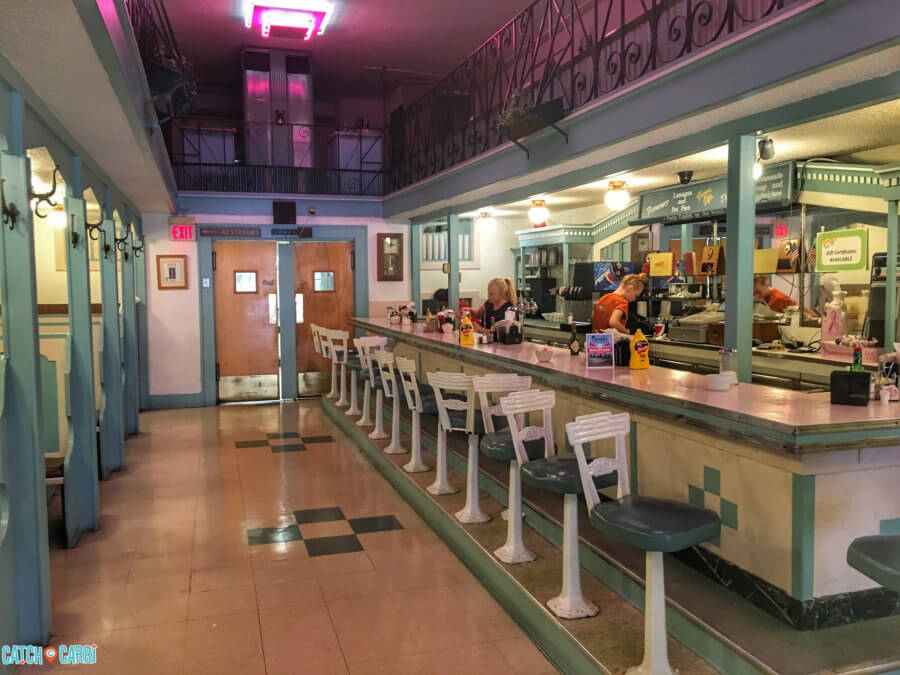
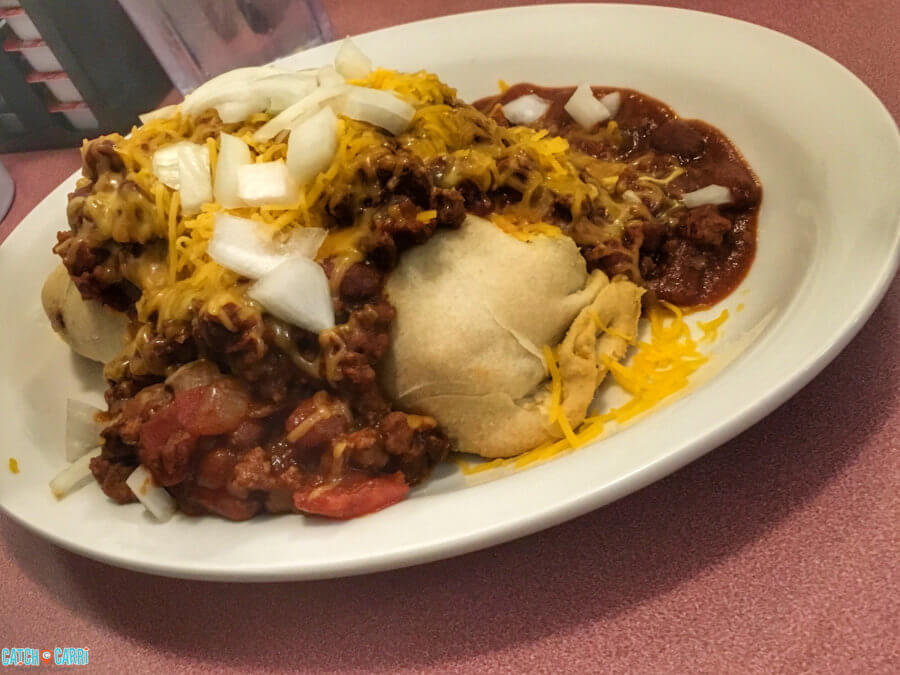
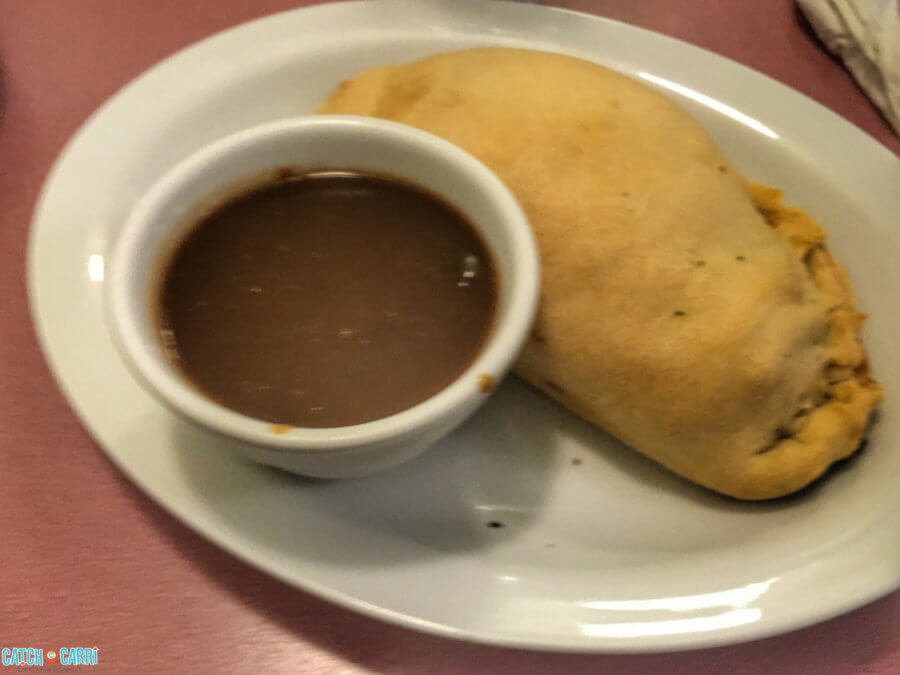
Where to Stay: Hotel Finlen
During the peak of the mining era, this historic hotel, inspired by the Astor Hotel in NYC, was the grand dame property in the West. It was the hotel of choice for both John F. Kennedy and Richard Nixon while they were campaigning. The hotel, built in 1889, has undergone many modern touches. The hotel is named for past owner and miner, Miles Finlen. His son eventually took over and built onto to the hotel and even put on a copper single roof- it was the roaring 20’s after all. Later on in the 1950’s a motor inn was added to the main hotel building, a common trend in that era. Today, the fourth through 9th floors are apartments with the rest of the property operating as a proper hotel.








